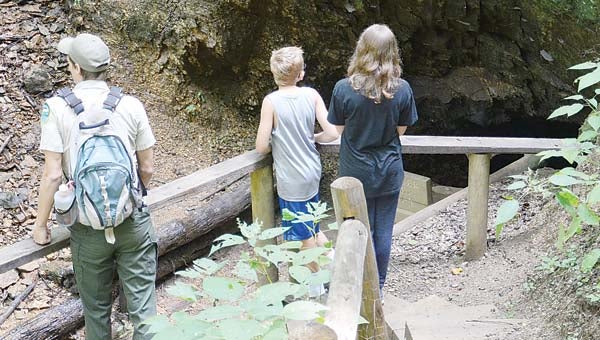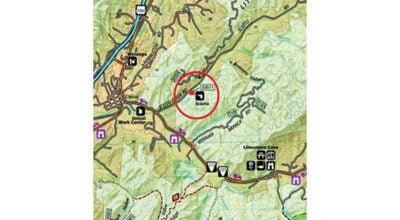Hikers explore Peg Leg Mine Trail
Published 8:35 am Monday, August 24, 2015

Star Photo/Rebekah Price Interpretive Ranger Nathan Casler shows Jessyca, 13, and Nathan Mitzel, 10, the opening to Peg Leg Mine.
Hikers visiting Roan Mountain State Park on Thursday not only got the chance to enjoy the outdoors, they also learned a little about the history the park is built on.
A group of eight hikers — some from nearby from Johnson County and others from further away in Baltimore, Md. — joined Interpretive Ranger Nathan Casler on a just under half-mile adventure to the Peg Leg Mine in the park.
Everyone met at the Visitor Center to embark on this educational journey along a well-marked trail through dense patches of rhododendrons to what is thought to be the oldest iron ore mine in Tennessee.
On the way to the mine, Casler explained the background of mine founder John T. Wilder, who lived in New York till age 19. He moved to Indiana in 1857 where he opened a metal foundry. During the Civil War, he joined the Union Army where he became Brigadier General. He passed through East Tennessee with his brigade and after the war, decided to return to Tennessee to improve his health and to seek and extract iron ore. He purchased 7,000 acres around Roan Mountain, including the site of Peg Leg Mine for $25.15 an acre in 1870.
When hikers arrived at the mine, Casler asked if they noticed anything unusual or unnatural. People pointed out the large flat area beside the mine and said they saw a few holes in the ground nearby. Casler explained that when Wilder came searching for ore with his team, they looked for red traces in the dirt and rocks, because when iron oxidizes, it produces rust, so wherever the rust was, iron ore likely was.
“Their process was trial and error: if you find something, keep digging, and if you find nothing, move on,” explained Casler.
After digging test pits, they discovered Peg Leg Mine and dug some distance back extracting ore. The distance is unknown because the mine is now mostly caved in. It is unsafe to enter the mine, but exploratory trips by professionals suggest the mine is less than 50 feet horizontally.
Historians believe they mined with axes and shovels, without the use of dynamite, Casler said. Extracted ore was drug out of the mine and then hauled by horse along the flat area beside the mine to where the ranger cabin now stands.
The water wheel outside the visitor center was moved from this location, but was initially used to power a 500-pound hammer that crushed the ore into small pieces. These pieces were shipped by railroad to Cranberry, North Carolina where it was processed and then shipped to refineries in Ohio and Pennsylvania.
Wilder owned part of the Cranberry Mine and had dreams of finding an iron seam connecting the two, but it was never found. With his success, he employed many people in Roan Mountain at Peg Leg Mine, Roan Mountain Inn and the Cloudland Hotel atop Roan Mountain.
At the mouth of the mine, children were eager to see inside, and others discussed the processes of mining and the impact of this industry on the largely undeveloped region.
After the hike, Nathan Mitzel, 10, of Baltimore, said he thought digging holes all over the mountain looking for wealth in ore would be “awesome.”
The prevalence of rhododendrons and the presence of such a variety of old trees is a testament to how hard folks like Wilder and his crew must have worked to obtain ore from this region.
The park offers a variety of educational programs and hikes teaching about wildlife, history and conservation.
For more information about park programs, call the park at (423) 772-0190.




